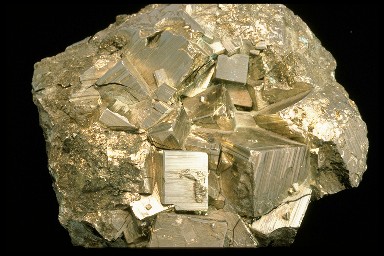Click on image for full size
Courtesy of Corel
Solid
Solid is one of the four common states of matter. The three others are gas, liquid, and plasma. There are also some other exotic states of matter that have been discovered in recent years.
Unlike liquids and gases, solids have definite shapes. If you pour some milk into a glass or fill a balloon with helium, the liquid (milk) or gas (helium) takes on the shape of the container (the glass or balloon). A solid keeps its own shape.
The atoms or molecules in a solid are packed together much more tightly in a solid than in a gas or a liquid. The atoms or molecules in a solid have fixed positions; they don't move around like atoms or molecules in a gas or liquid do. That's why liquids and gases can flow, but solids don't.
Solids are usually much more dense than liquids and gases, but not always. Mercury, a metallic element that is a liquid at room temperature, is denser than many solids. Aerogel, a very unusual human-made solid, is about 500 times less dense than water.
Many solid materials will melt when heated. When solids melt, they become liquids. For example, when iron is heated to a temperature around 1,538° C. (2,800° F.) it melts and becomes molten iron. When liquids are cooled they can freeze and become solids. A familiar example is liquid water turning into ice. Under certain conditions (usually low pressure) some solids can turn directly into a gas without first melting and becoming a liquid. When a solid turns directly into a gas we call the change "sublimation". Maybe you have seen dry ice (which is very cold, frozen carbon dioxide) sublimate.
Crystals, wood, rocks, most metals, and glass are all examples of common solids. Your bones and teeth are also solid materials. That's a good thing... it would be hard for you to eat or get around if it weren't for solids!














